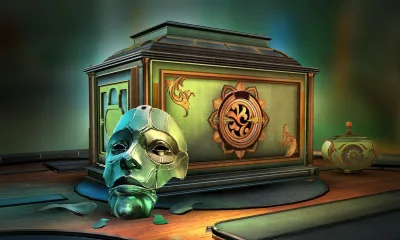Reviews
Tsugunohi Review (PlayStation 4 & PlayStation 5)

Rekindling the Fires

To make it absolutely clear, there isn’t a whole lot of things to complete on your to-do list here, other than to hold a single button down and subject yourself to regular intervals between various cutscenes and conclusions. Aside from that one-note interaction—a presence that sticks with the game throughout the entire campaign—there are several other aspects, though barely enough to escalate it from a glorified animation to a fully-fledged video game. And just to clarify — this is not a video game, even if it does incorporate the occasional button prompt.
A Walk Through Time

It goes like this: you take control of a character—a seemingly tormented soul who, over the course of several days, take it upon themselves to traverse the hollow grounds and confront their inner demons. As the days tiptoe forward, the world around you begins to take a different shape, ultimately leading toward a harrowing nightmare that’s crammed to the brim with inescapable realities and tantalizing truths. It’s your role, as the overseer of these tales, to witness the events unravel themselves, and essentially nudge closer to a conclusion that either results in the character’s tragic demise, or an awakening to a world that’s barely recognizable.
Each tale in Tsugunohi only takes roughly fifteen to twenty minutes to complete, making the whole series just shy of three hours, give or take. In each of these episodes, there aren’t any major obstacles to overcome — only vivid depictions of what could become of your character on the following day. It’s a simple concept, and one that doesn’t require a mastermind to decipher, either. But when all’s said and done, is it actually worth playing, given the sheer lack of interactivity between the game and the player?
To cut a long story short, Tsugunohi is a one-and-done sort of ordeal. It’s a one-and-done thing, mainly due to the fact that each conclusion features a jump scare of some sort, which is only really effective once or twice. In other words, once you’ve removed the veil and witnessed the big pay-off, there isn’t much else to untangle, meaning, there isn’t any real reason to return to relive the highlights, unless, of course, you’re introducing them to a new player and wish only to skulk around their reactions. But that’s about it.
Scare Me Once, Shame on Me

In spite of the game’s best efforts to create a thread of original works of art, the layout in each given scenario is nearly always the same, as is the progression: you walk left, and you whittle down the days until something comes out of the shadows to tangle with your senses. Sure enough, the foes are different, but the gameplay and storyboard isn’t all that expansive, again, fortifying the fact that this is, all things considered, a straight-up, one-time only gig that has little to no replay value whatsoever.
Lack of replay value aside, Tsugunohi is worth playing through, if only to rekindle a few memories of the golden age of Flash animation. Sure, its visuals are clearly outdated, and its voice acting is questionable at best, but then, in the strangest of ways, these are just two of the things that make it all the more unsettling. It’s a time capsule for the senses, and although it’s without the quality of a modernized horror, it is, in all fairness, a sight for sore eyes. That is, of course, providing said eyes belong to someone who actually lived through the aforementioned era.
I will say this: Tsugunohi isn’t the scariest game on the block, nor is it one that’ll stick to the root of your nightmares for the rest of your days, either. However, there is a certain something that it does conjure, and I’m not entirely sure whether it’s embedded in the shoddy art style, or in the crags and crevices of the sound design itself. Whatever it is, it clearly has the capacity to persuade millions of players to experience it for themselves. And as it turned out, I was just one of the many who felt the wrath of the hook. Well played.
Verdict

Tsugunohi Review (PlayStation 4 & PlayStation 5)
A Real Flashback
For those who have a heart for outdated Flash-centric J-horror, Tsugunohi is sure to tickle your senses and give you something to write home about. It isn’t a video game, but more an interactive time capsule with a litter of nostalgic animations. Take from that what you will, my friends.











